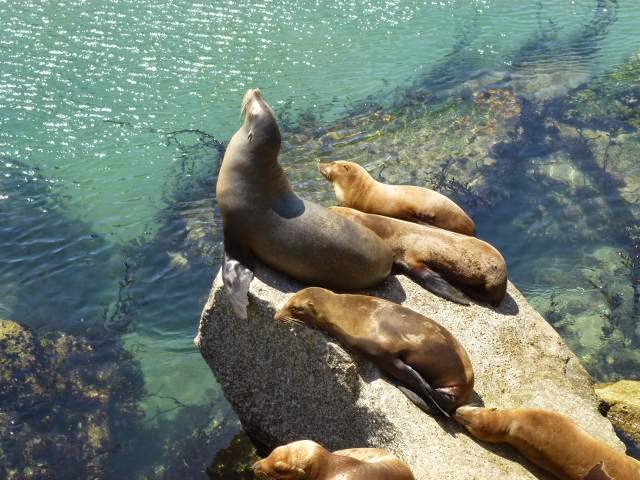We
started off in a regular campsite but moved to the Santa Margarita Lake County
Park campground when we realised how lovely the area was directly around the
lake. There weren't any facilities like electricity or internet and not even a phone signal, but it’s a huge
natural park with plentiful wild life, and peace and quiet. In fact, we were
the only residents in the motorhome area! We overlooked the lake from the bottom of
our pitch, where our chairs are (between
the two trees).
Of
course, we’d like to have seen some bears but didn’t, although all the bins had
chained, bear-proof, lids and warned against leaving food out.
The
only food we left out was in the hummingbird feeder and that was particularly
successful.
There
was a huge variety of birds, even big ones like the bald eagle, red tailed hawk
and a golden eagle, and numerous turkey vultures. Here they are flying off the
road, having just read the notice behind that says “No Parking At Any Time”.
There
were small ground squirrels everywhere. Very cute.
The
dead oak tree branch looks like it’s been riddled with machine gun bullets. In
a way it has; these are oak woodpecker holes in which they store their acorns.
Walks
took us up high for a good view of the lake. It’s shrunk immensely over the
last five years like all of California’s water resources due to the drought.
The
drought is worth mentioning in more detail. Everyone is worried about it; the
Governor, ex filmstar Arnold Schwarzenegger, has declared a 20% saving target
for the whole state.
However,
it’s hard to see what practical steps are being taken at street level. Lawns
and grass verges are still being watered by automatic sprinklers that
distribute as much on the pavements and roads as on the grass. People are still
washing vehicles with generous amount of water. Swimming pools are all in
operation.
But
the State is serious about it. Many State-owned campsites now have the water
completely turned off. The campsites are still open, but you have to bring in your
own water. Motorhomes and caravans here all have big water storage tanks, so it’s
just an inconvenience. But hang on, where will the campers fill up their tanks?
They’ll use the previous campsite, or if local, fill at home- so the water still comes from the
State of California. So where’s the saving?
This could have been a Goon Show script!
Santa
Margarita Lake was a really lovely, relaxing place. We now go to manic LA for two
days to sort our the motorhome before returning it to the El Monte depot on the
13th. We fly out later that
same day to Washington DC from where we’ll be visiting Claire and family, and also
Ralph & Kelly. This is the family part of our trip that we are very much
looking forward to.





























